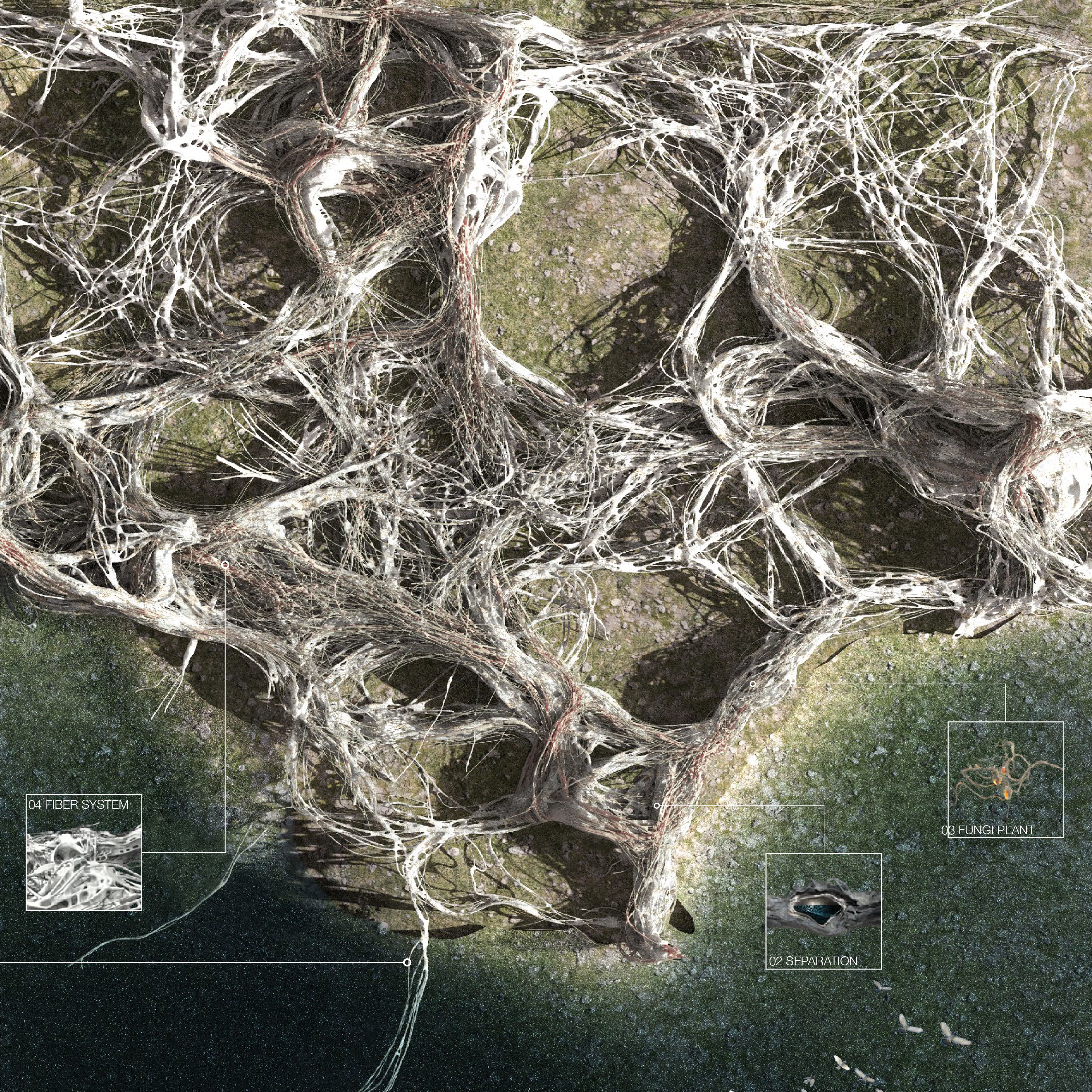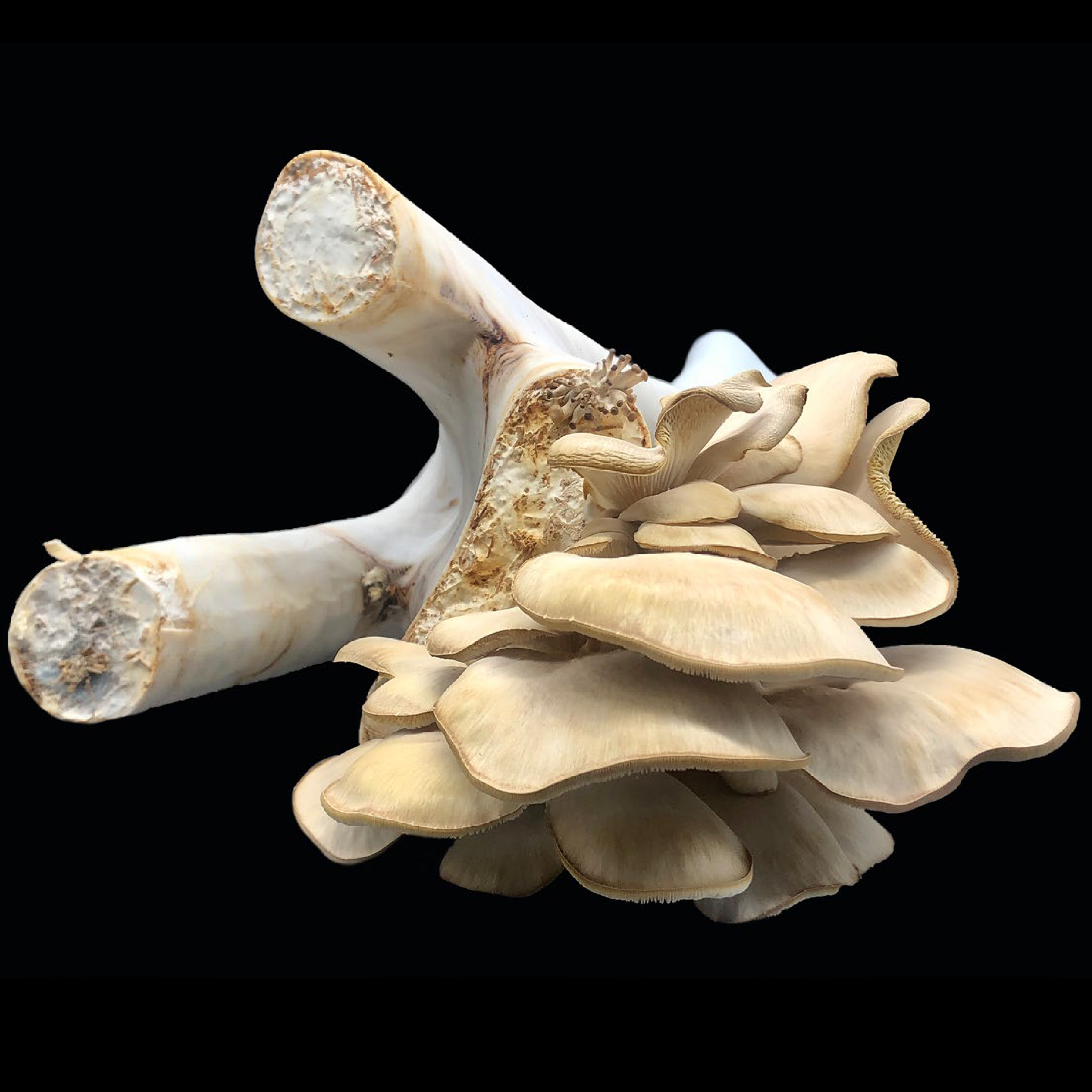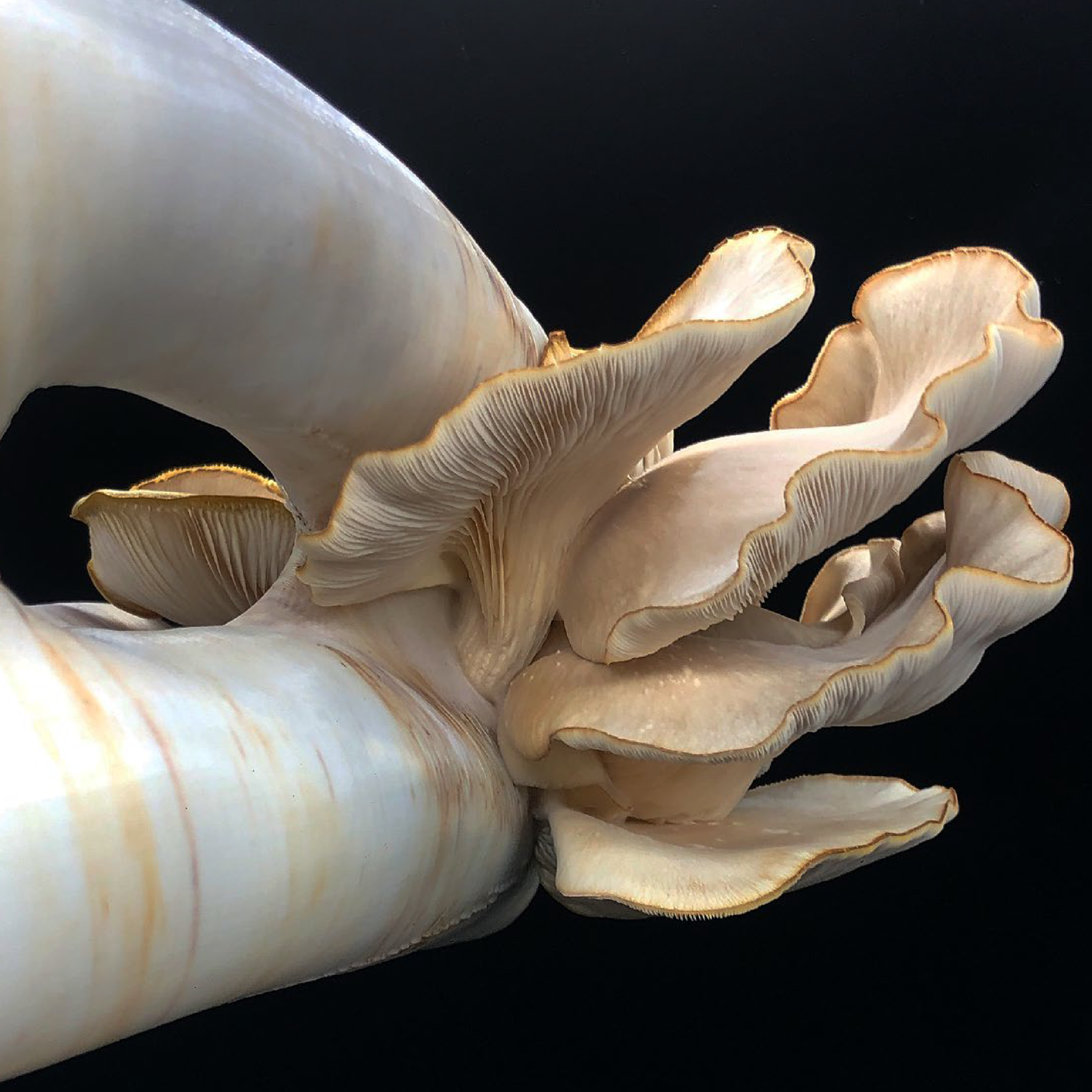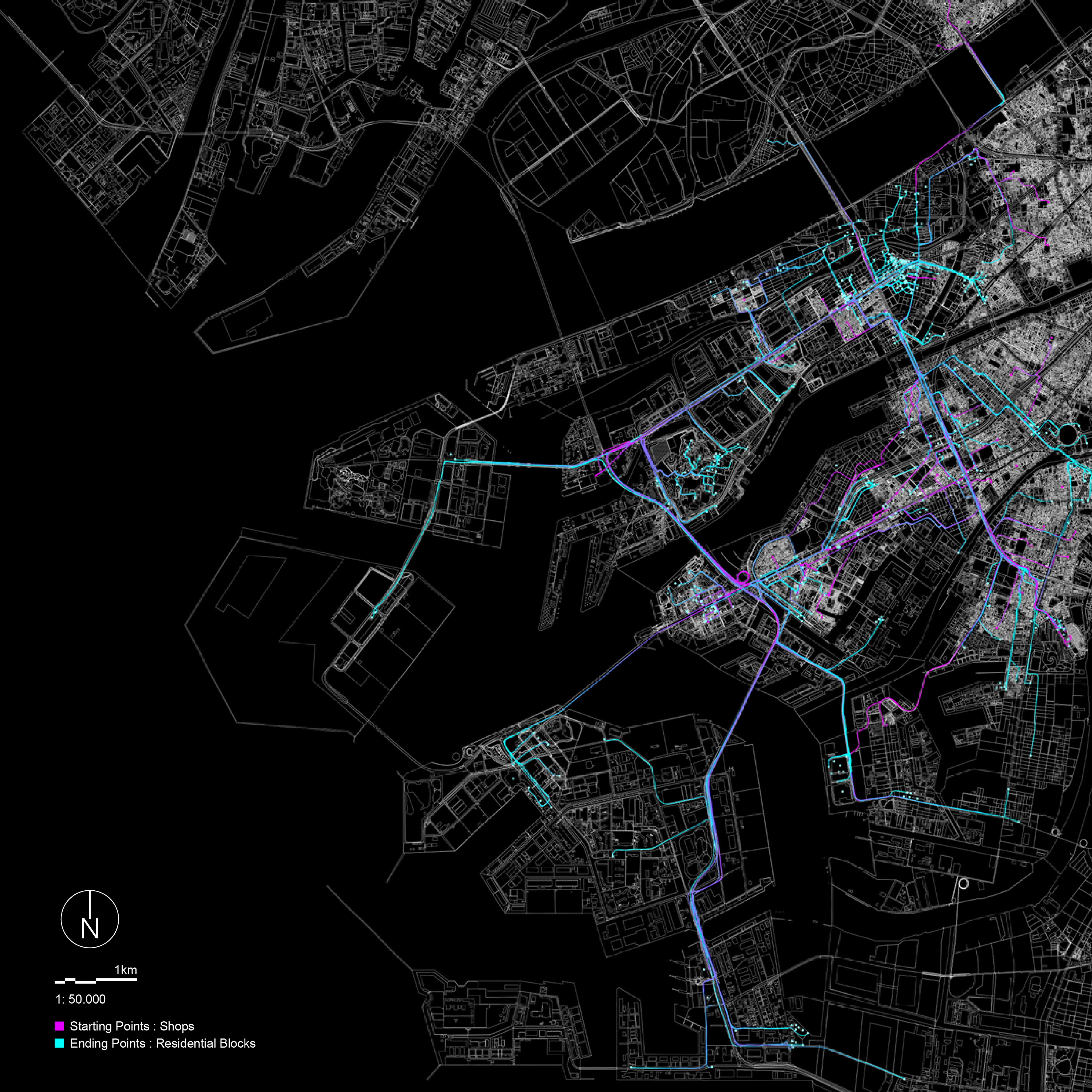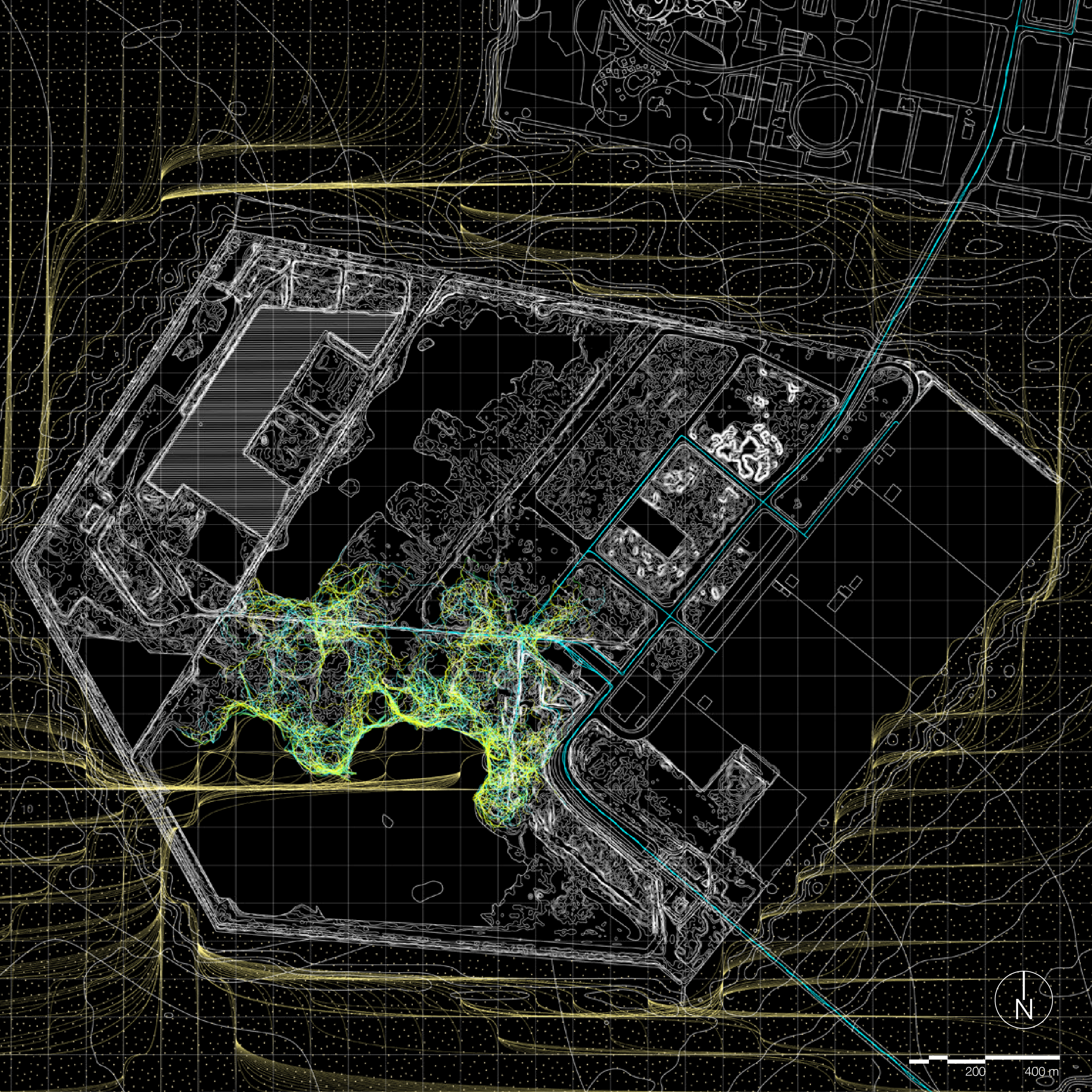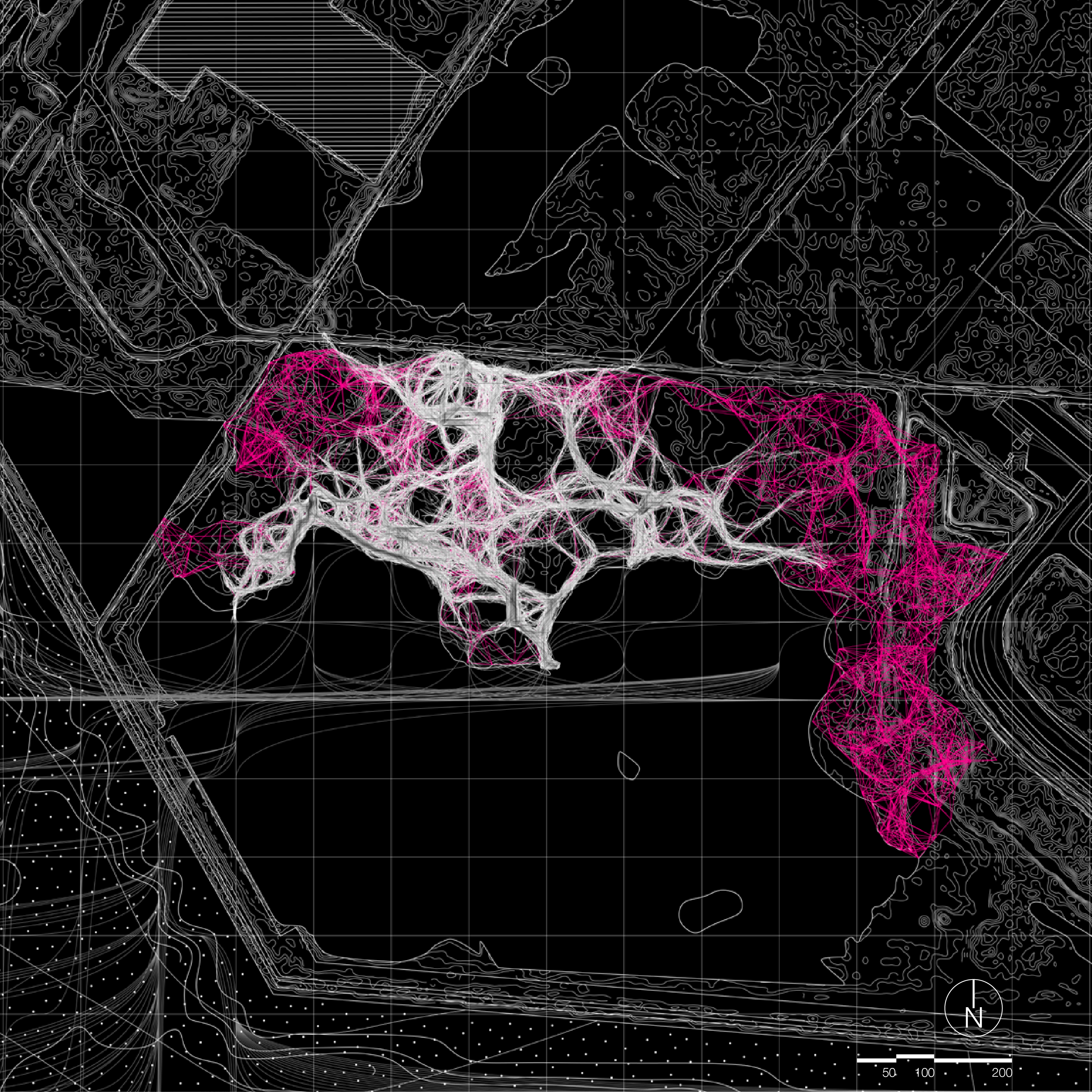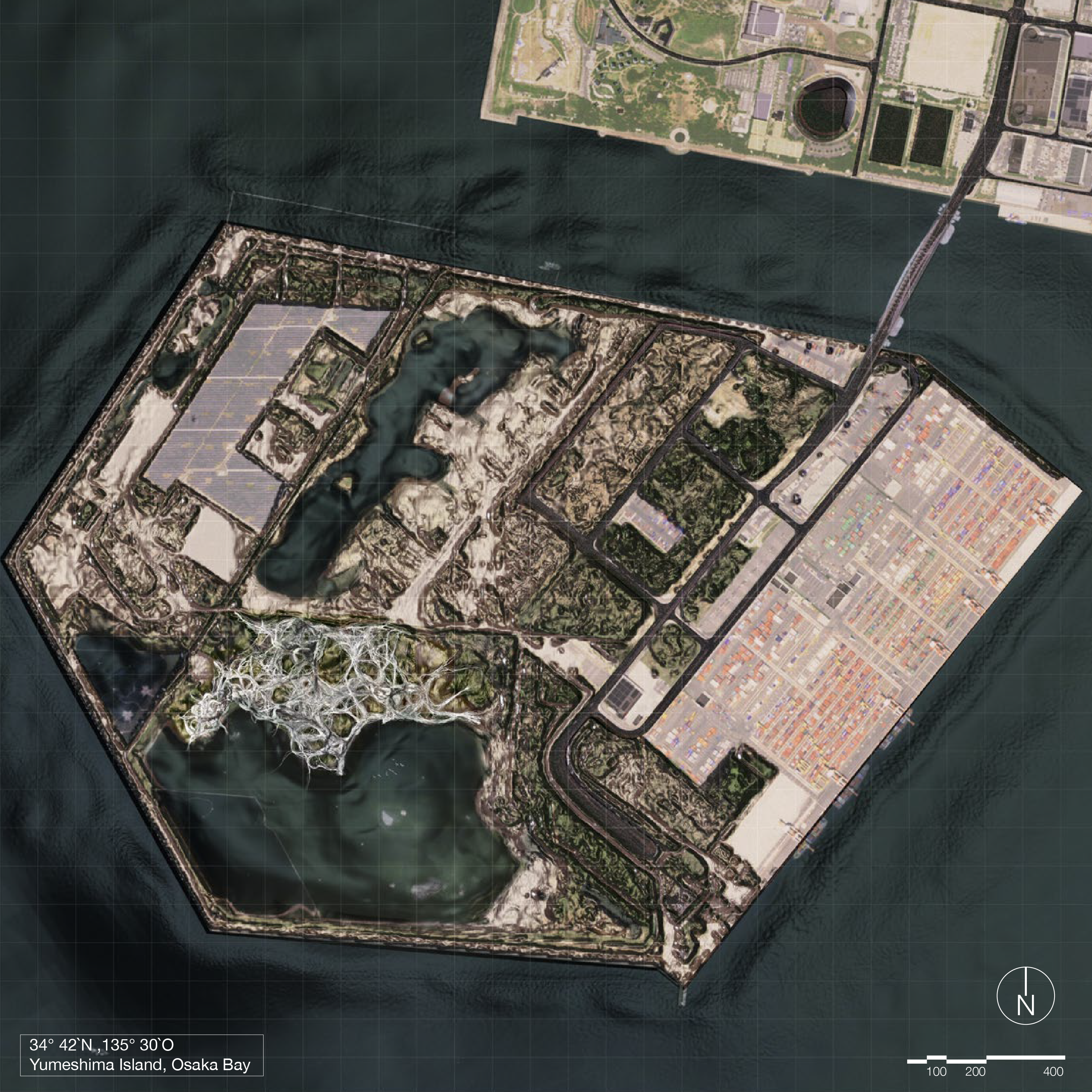Synthetic Hyphae
Master Thesis by Charles Wirion
Synthetic Landscape Lab August 2020
Supervision by
Univ.-Prof. Dr. Claudia Pasquero, Dipl. Eng., MA AA
Maria Kuptsova, MArch
In this thesis, a new approach for the collection and processing of plastic waste is developed. This new approach consists of creating an autonomous biomechanical organism in the form of a three-dimensional structure with the purpose to bio-degrade plastic. This structure will be built with fungal mycelium and recycled plastic, whereby the latter is responsible for the biodegradation of plastic waste.
As a starting point for the thesis, algorithmic maps are drawn to illustrate the lifespan of plastic in the city of Osaka based on GIS data. Pathways emerge from these maps, that show how plastic waste travels through the city. This results in areas of high travel density that can suggest where collected plastic waste might get lost to the environment. Based on these studies, the site Yumeshima Island was extracted.
The structure gets its plastic waste input from bio drones, collecting it in Osaka Bay. From there, the plastic travels through the fibre system until it reaches the first chamber, in which it gets separated. Thereupon, the sorted plastic travels to their respective processing destinations based upon their recycling ability. The recyclable plastics get shredded, melted, and formed into 3d filament, which is used to build the outer pipe melds that are holding the mycelium substrate in place. The non-recyclable plastics are transferred to the mycelium plant, where they are shredded and mixed with the mycelium to form a unique substratum, that can biodegrade both, the incorporated non-recyclable plastics, and the recycled outer shell.








